The Portland Thorns are off to their slowest start in their 12-year history, scraping one point from their first three games of the season (and only one in their last five games, all-competitions), and it’s a valid question to ask where everything is going wrong. For two games in a row, the Thorns have put out their best XI (minus Hina, who needs to be starting and is not, for some inexplicable reason), and in both games they have been outplayed.
In the season opener against the Kansas City Current, the poor performance and shocking number of goals conceded could be fairly overlooked due to extenuating circumstances: a large portion of the starting XI had their minutes managed after coming back from the Gold Cup days prior, and the backline consisted of three players who were making their NWSL debuts. But this many poor showings in a row, the common denominator must be the coaching. There are too many talented players on the roster for each to individually be making repeated errors. I am going to attempt to break down why the Thorns’ current tactical approach is not working, and ultimately propose that new leadership is desperately needed.
First, let’s look at the Thorns’ shape. This season, their go-to formation is a 4-3-3, with only two new Thorns featured in the lineup against Louisville: Marie Müeller at left back and Jessie Fleming as a box-to-box midfielder. From the whistle, it seemed clear the the Thorns were instructed to try to build the ball out of the back, beginning with familiar duo Becky Sauerbrunn and Kelli Hubly at center back. The two of them have been playing together for four seasons now and should be extremely comfortable with one another. In the first image, we have Sauerbrunn on the ball, looking to begin to build. Both the left back (Müeller) and right back (Reyna Reyes) are pushed wide and high and wide along the touchlines, so much so that Müeller is out of frame. The Racing Louisville front three are pressing high and have eliminated most of the Thorns’ passing lanes, forcing Sauerbrunn to pass square to Hubly, which ultimately does not move the ball in a productive manner.
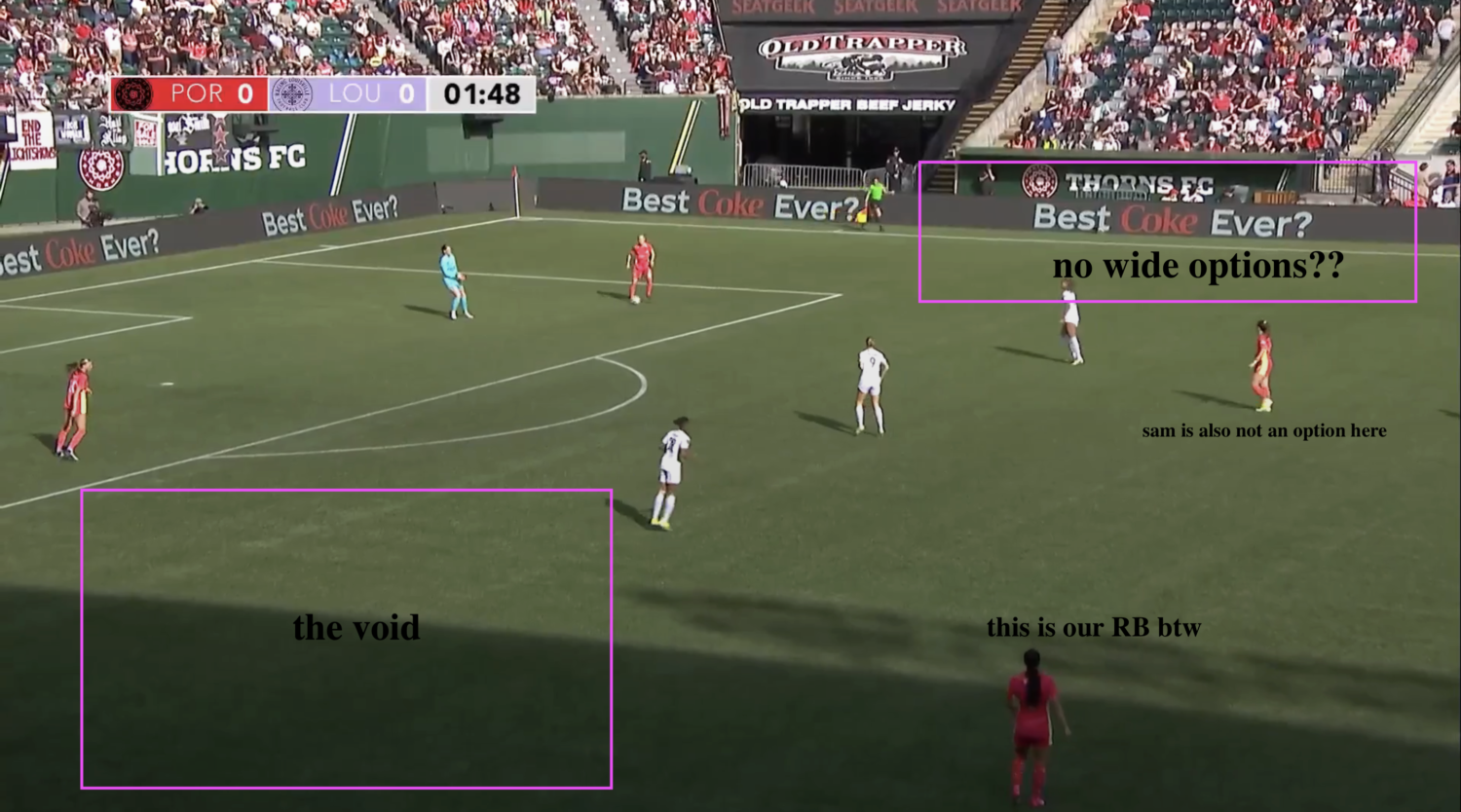
In the second image, the ball has moved wide left to Müeller on the touchline. Once again she is isolated, with not many players cutting in and looking to become an option, forcing her to play backwards toward Olivia Moultrie or Sauerbrunn. While these two stills are from the opening minutes of the game, they are reflective of how the Thorns spent the first half, especially with Norris sitting up in the press box, unable to provide tactics or changes to the players.
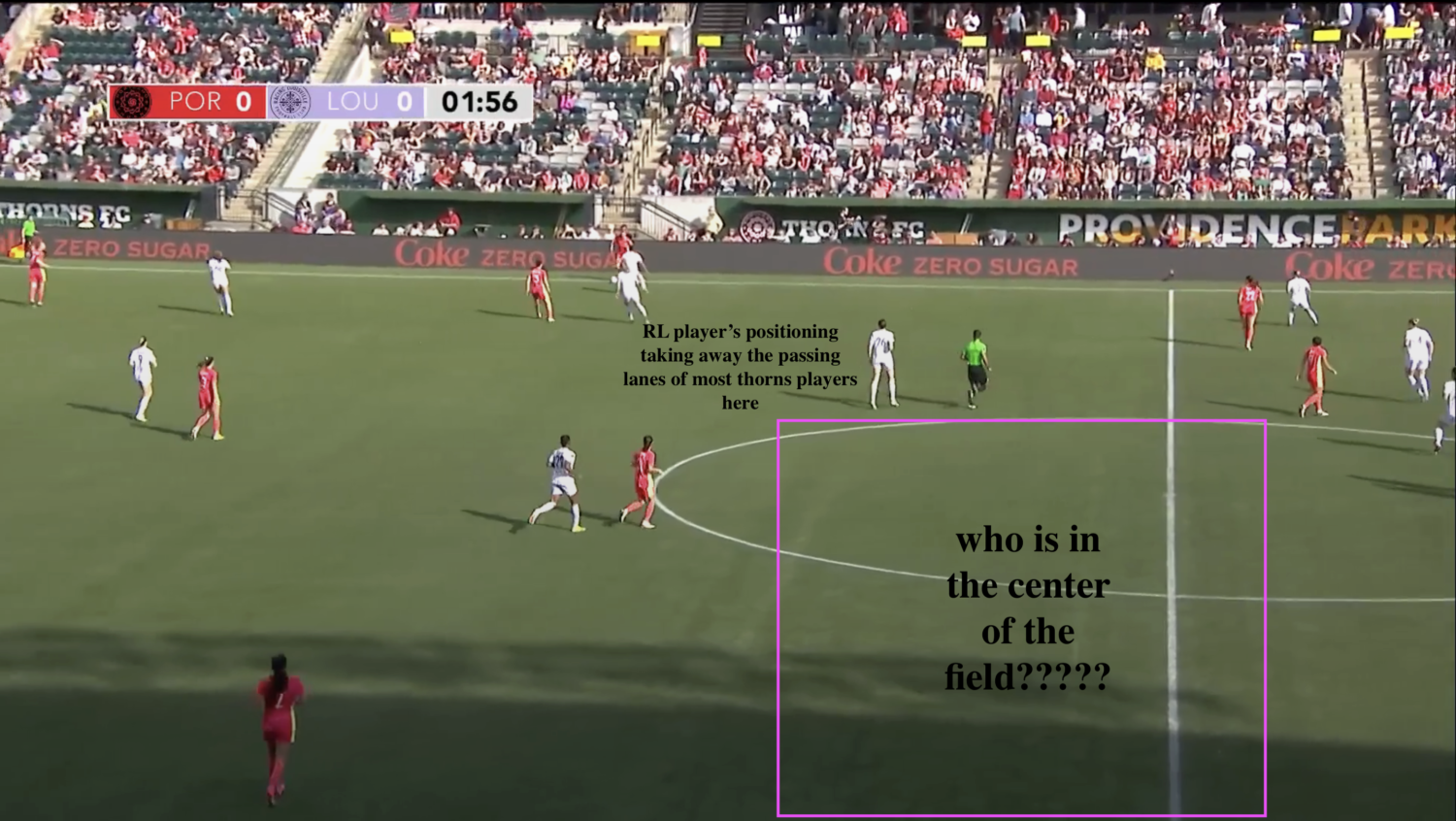
Based on OPTA’s “Zone of Control,” the Thorns have the most ball control and touches through the center of the field. With talented wingers like Reyes and Müeller, it would be in the team’s best interest to try and activate them in the wings, providing a different look that does not rely on Sophia Smith taking on three players successfully to earn her team a shot on goal.
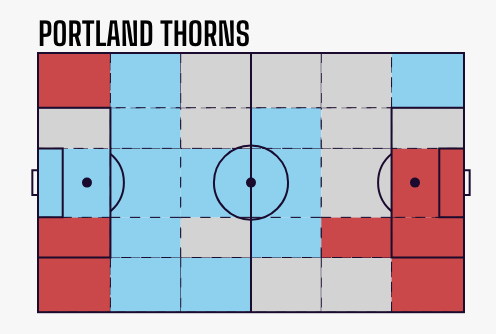
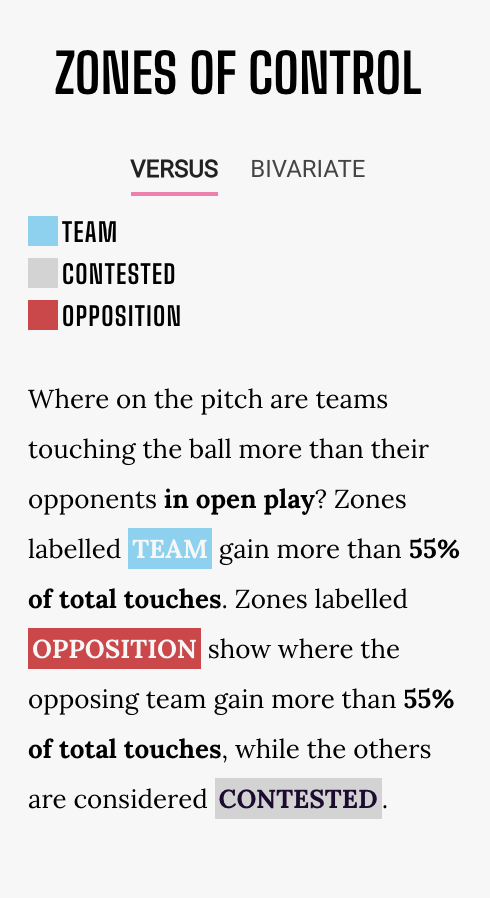
Now, let’s take a look at the build-up that led to Racing Louisville’s first goal. The play starts with Hubly at the center circle, as she looks to move the ball forward to Janine Beckie, who is crashing in. Instead, Louisville player Uchenna Kanu intercepts the ball and is able to start a fast break. There are two main issues with this play. First, the Thorns are once again looking first to play through the center of the pitch—even though most of Portland’s players are grouped together further up the pitch and are not immediate passing options.
Over the course of all three games, it has become clear that head coach Mike Norris’s number one strategy is to get the ball up to Smith, who’s playing high and central as the No. 9, and allow her to work her individual magic. Unfortunately, other teams have caught on to the fact that Smith is the best player in the league, which means they often will have two or three defenders marking her. This means that the Thorns will have several open players, which, frustratingly, they never seem to find. Instead, they are choosing to move the ball through the congested center of the pitch, where Louisville is pressing high, which leads to frequent turnovers.
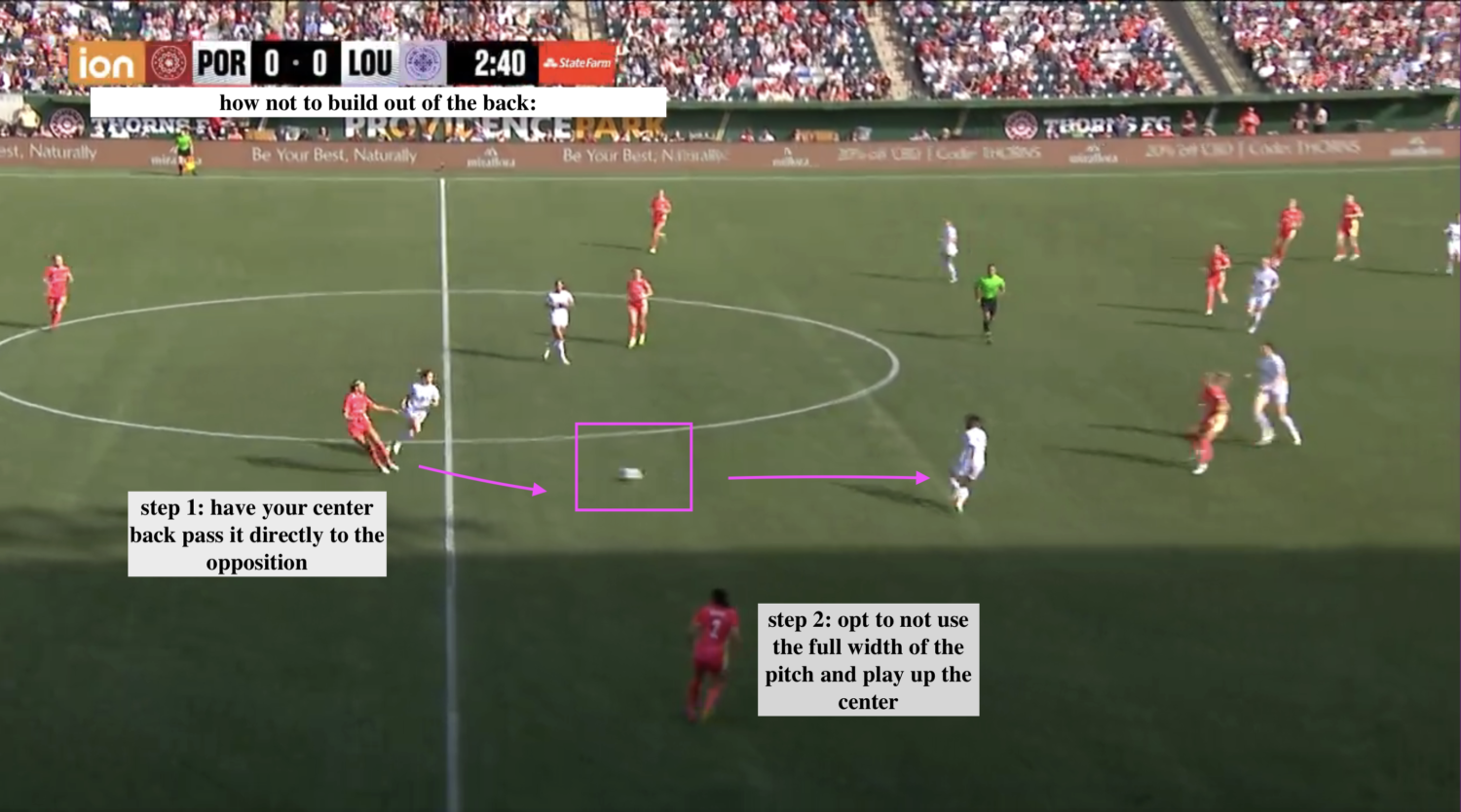
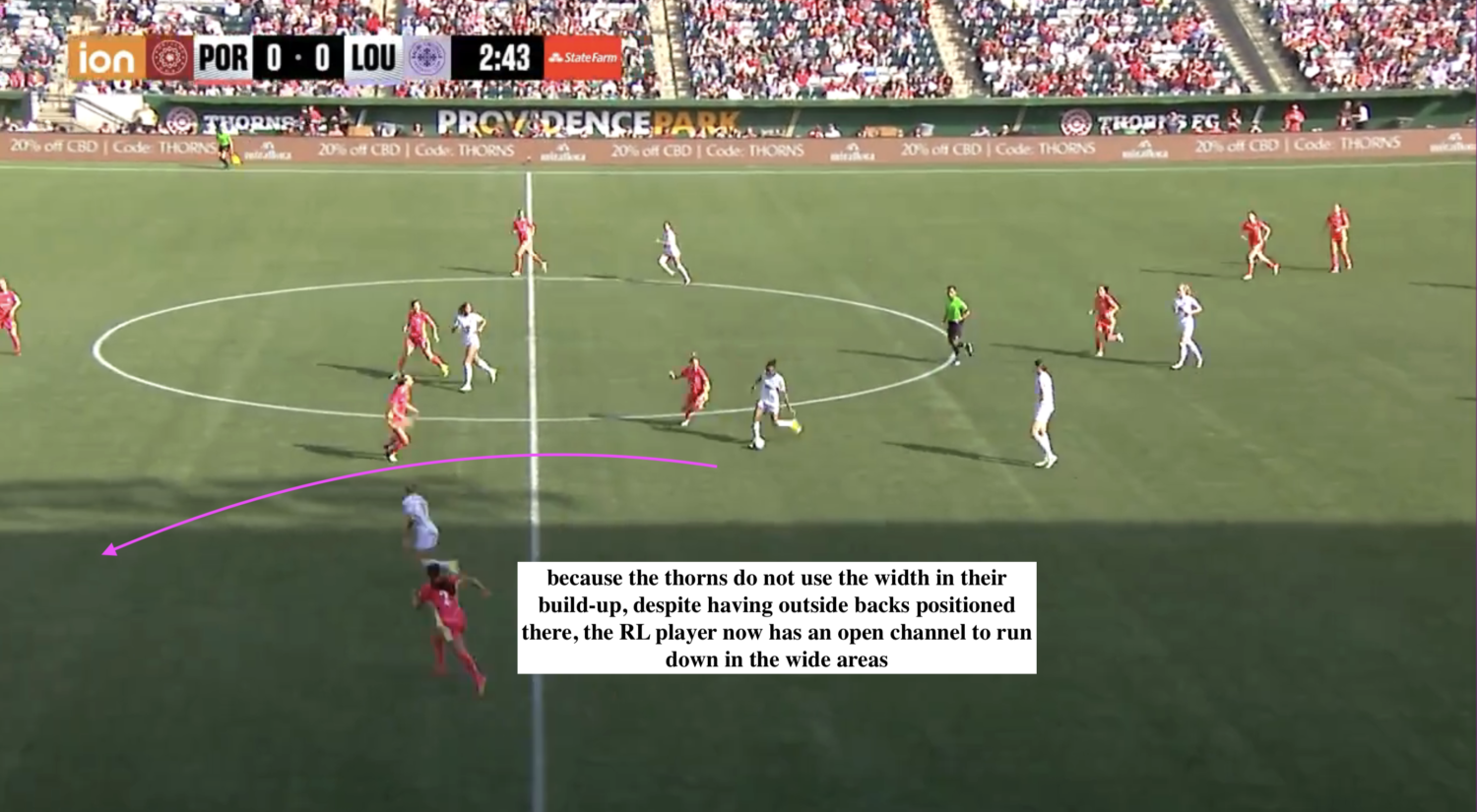 The buildup to the second goal, which came only two minutes later, was the same. Louisville was able to capitalize off of an errant pass from Portland’s backline and to get off a cross. A two-vs-one in the box (including 1.75m Hubly versus 1.53m Kanu) ended with Kanu sending a looping header into the side netting. (Editor’s note: That’s 5’9″ for Hubly and 5’8″ for Kanu, for those of us who aren’t living in Ireland.) Just like that, before the game had even really begun, the Thorns found themselves deep in a hole of their own creating.
The buildup to the second goal, which came only two minutes later, was the same. Louisville was able to capitalize off of an errant pass from Portland’s backline and to get off a cross. A two-vs-one in the box (including 1.75m Hubly versus 1.53m Kanu) ended with Kanu sending a looping header into the side netting. (Editor’s note: That’s 5’9″ for Hubly and 5’8″ for Kanu, for those of us who aren’t living in Ireland.) Just like that, before the game had even really begun, the Thorns found themselves deep in a hole of their own creating.
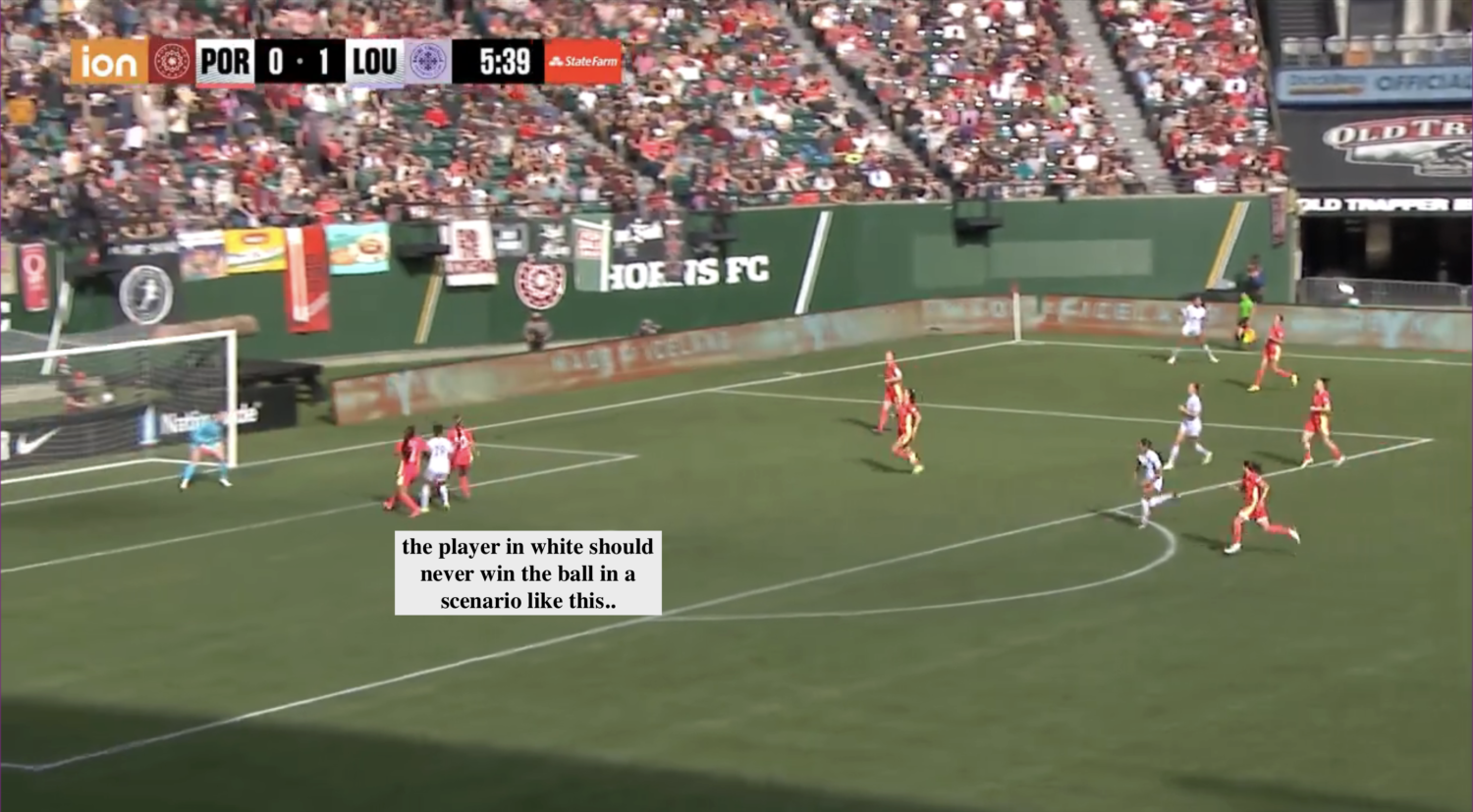
I am not asking the Thorns to play like Prime Barcelona, but it is incredibly frustrating to see the same tactics being deployed over the first three games, all while getting incredibly disappointing results. It is not enough to expect “grit” and “relentlessness”—as Norris spoke of in the post-match presser—to come through and save points for the team in the end. Portland needs strong tactics and an identity, both of which they are currently lacking.
Norris said that these errors, “did not define the team today”—a statement that seems at odds from the product on the pitch, which has been consistently below standards across all three games. The Thorns have allowed eight goals so far this season—the most of any team in the league—and show no sign of closing the dam unless there is a serious switch-up in tactics and coaching for the team.

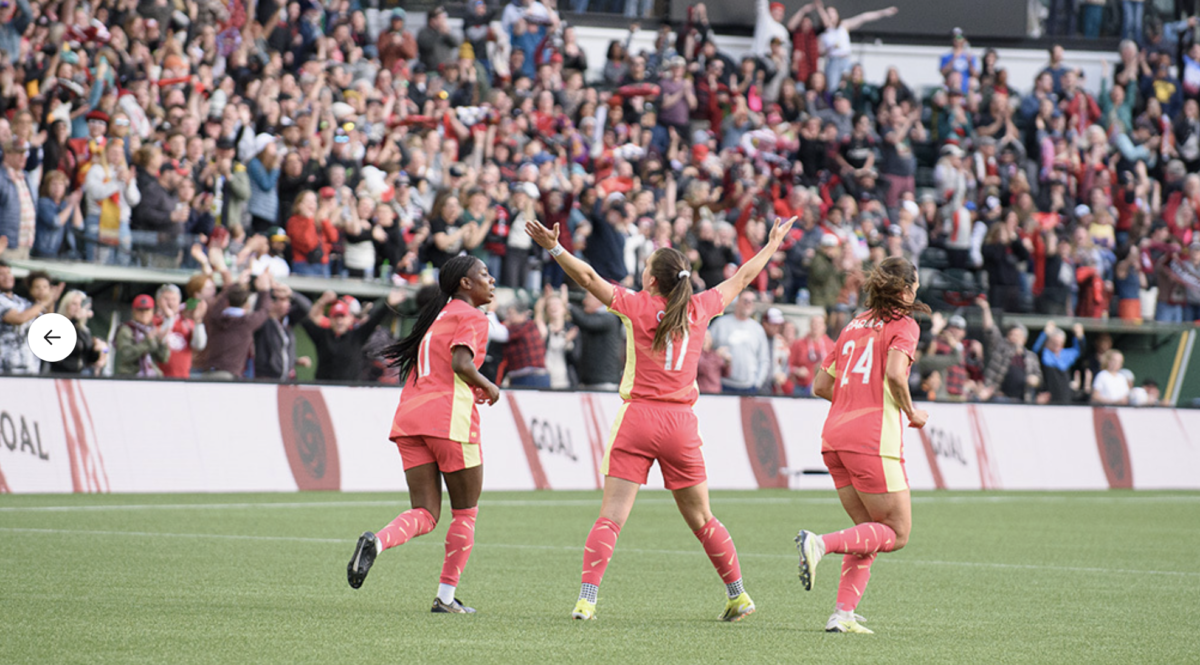
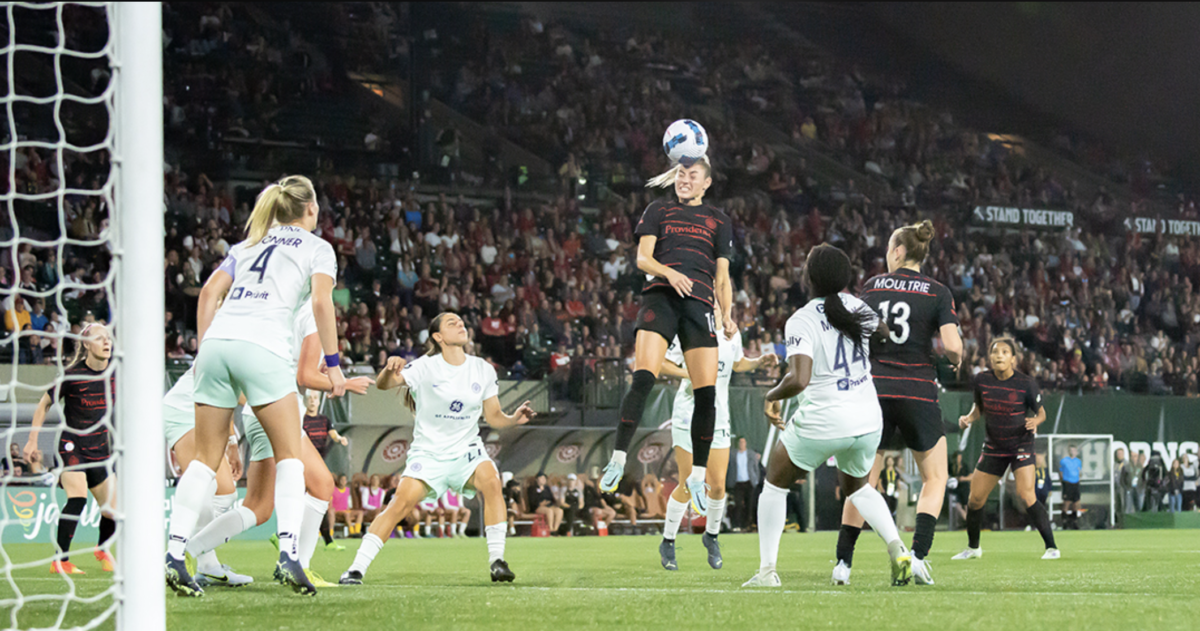
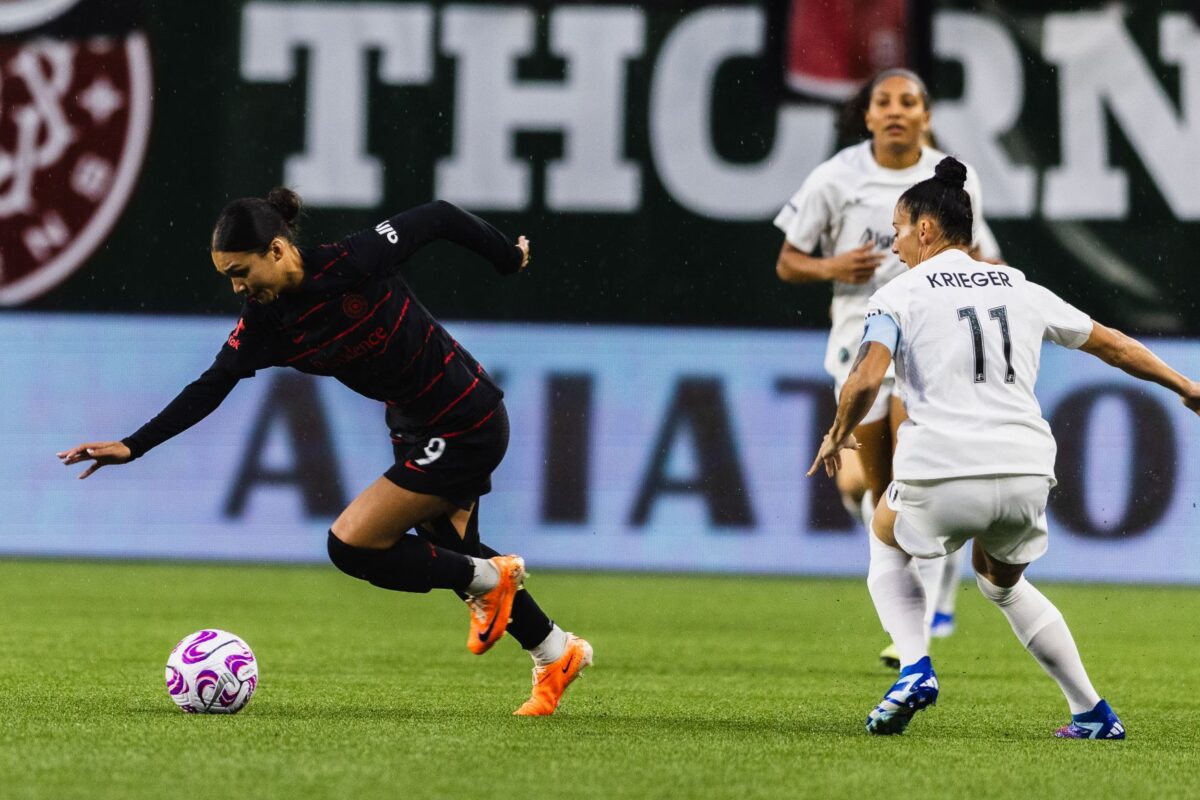
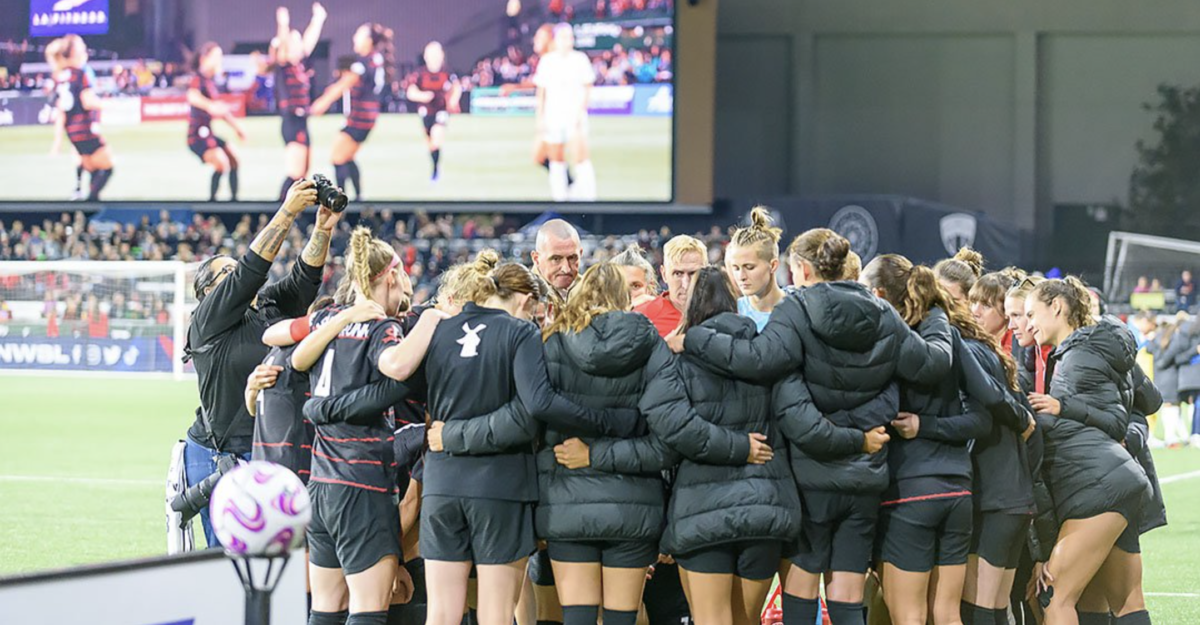
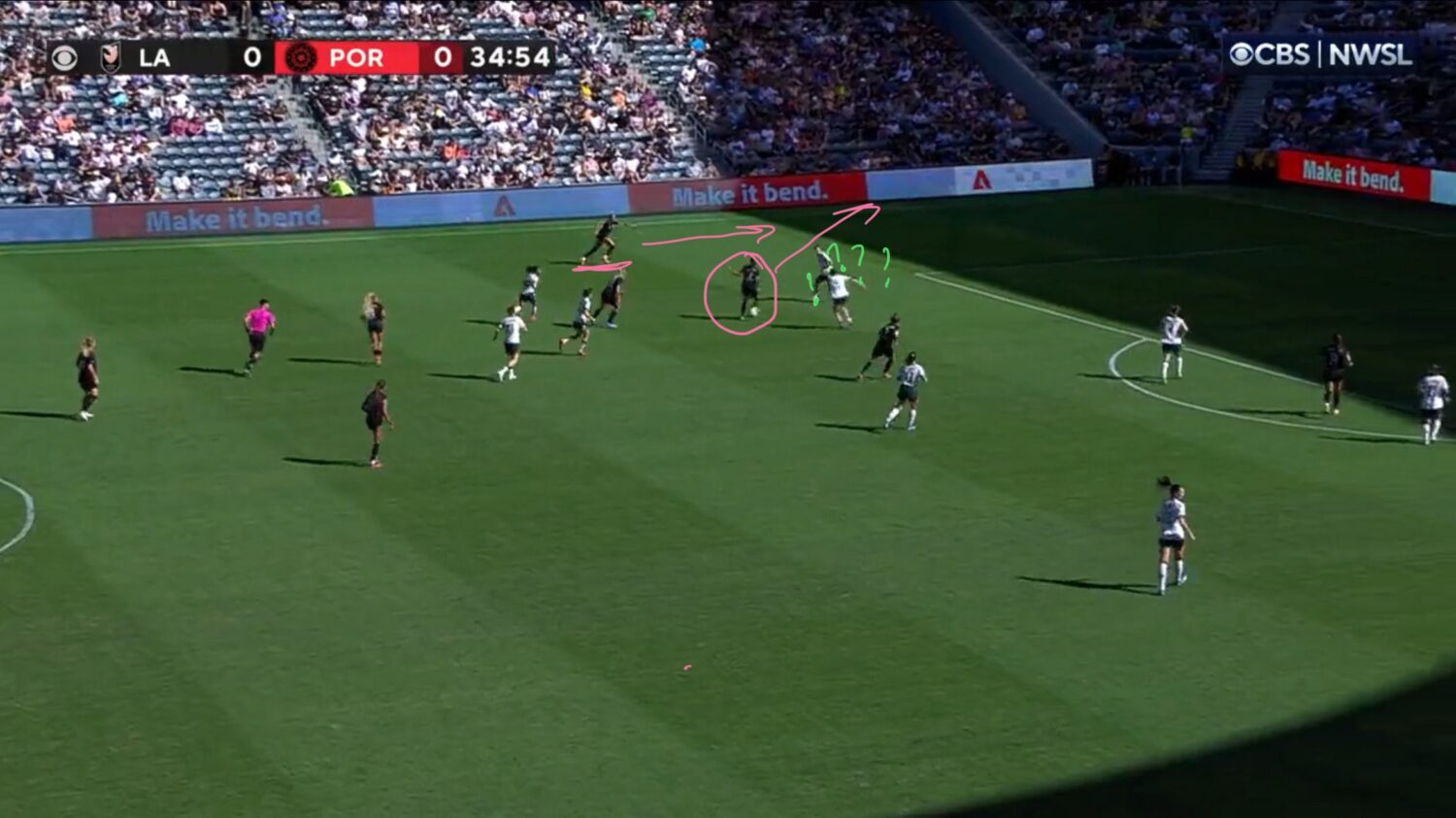
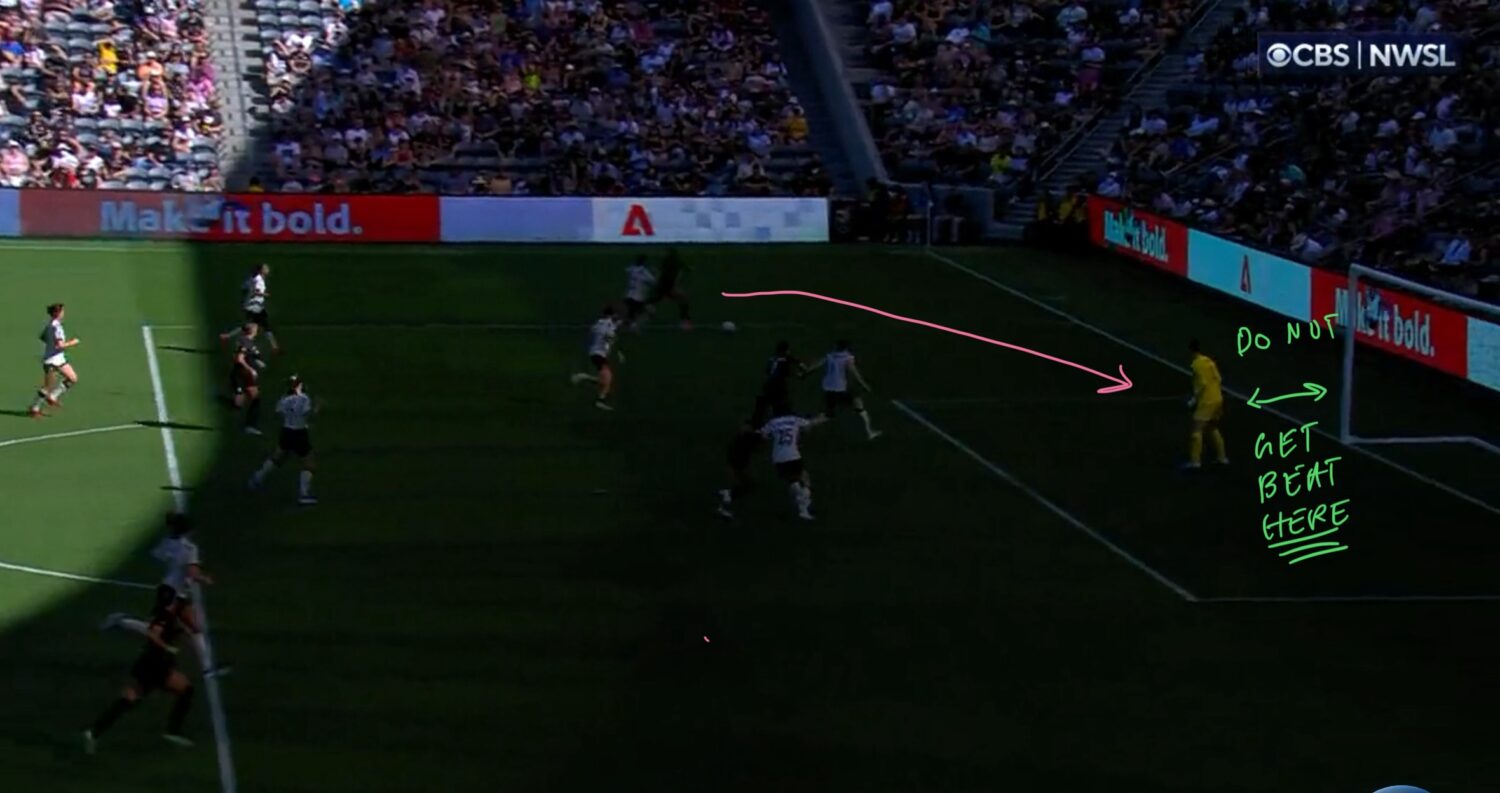
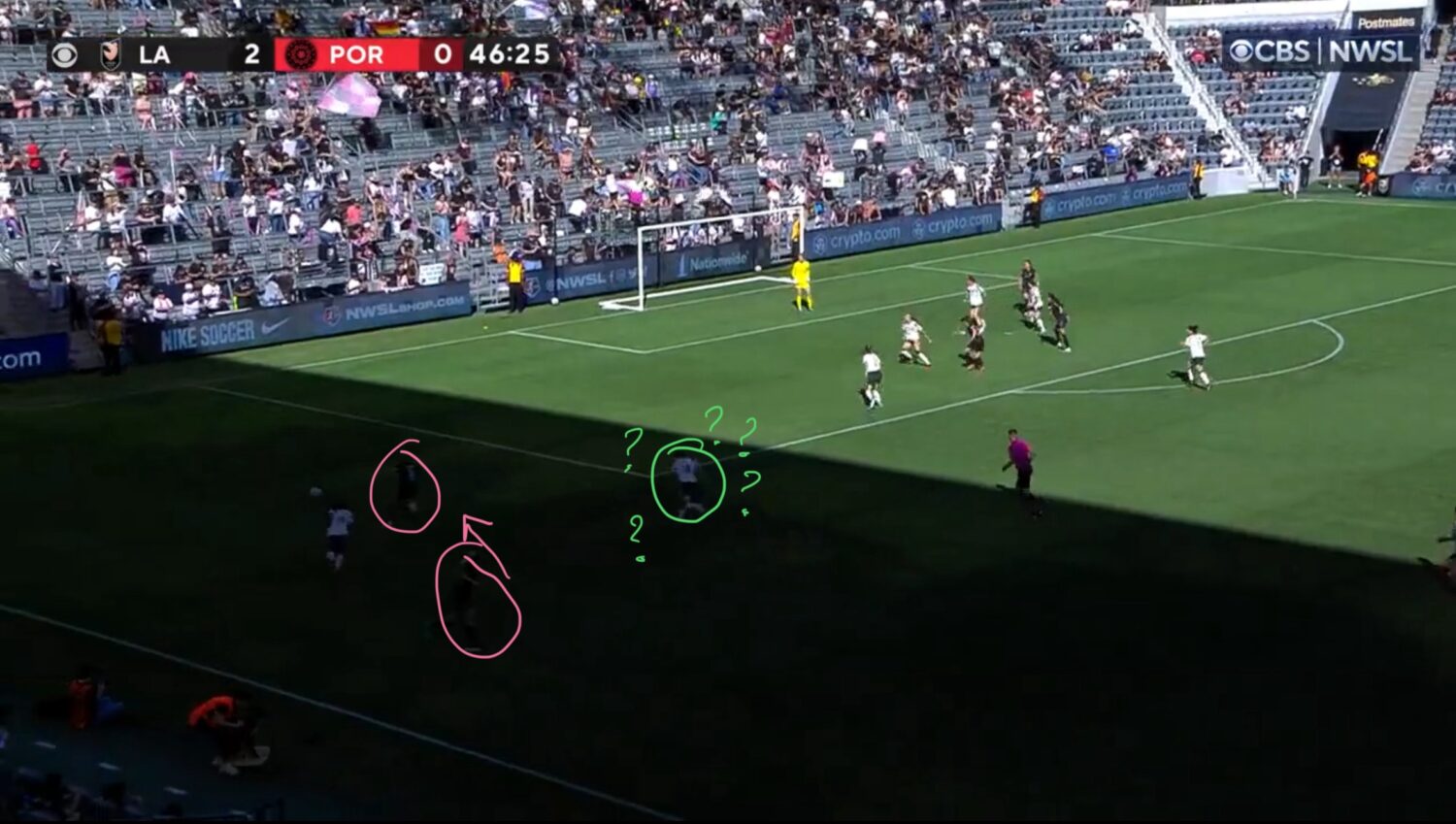
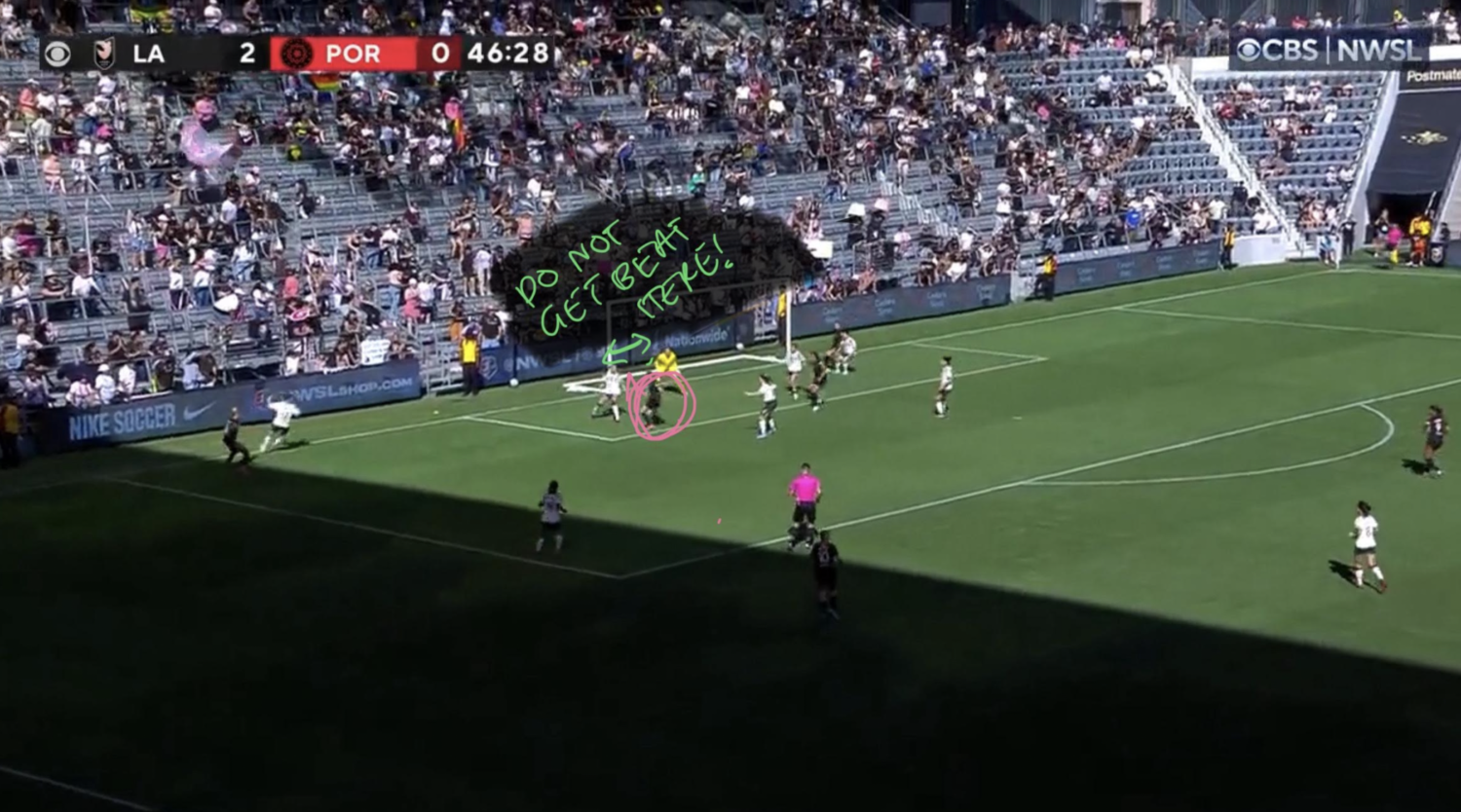 The Angel City player doesn’t make the best choice and passes it right into traffic in the six-yard box, where it looks like they are covered both by Bixby and Kelli Hubly at the near post. So, how does this play end in a goal? Honestly, I have no idea. Maybe it would have been a weird fluke, but when it’s the third goal given up in one game in the same mann
The Angel City player doesn’t make the best choice and passes it right into traffic in the six-yard box, where it looks like they are covered both by Bixby and Kelli Hubly at the near post. So, how does this play end in a goal? Honestly, I have no idea. Maybe it would have been a weird fluke, but when it’s the third goal given up in one game in the same mann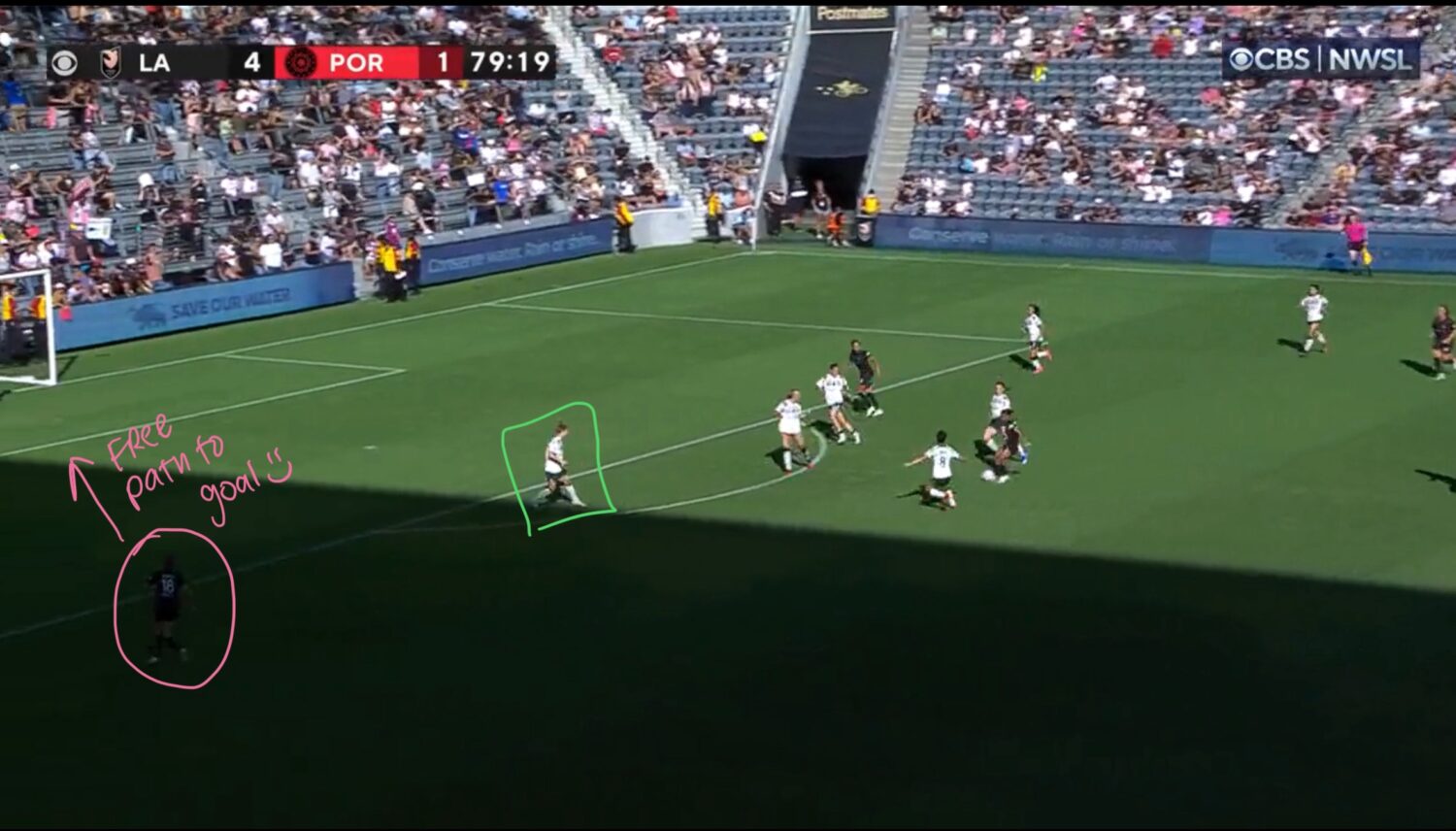 Angel City’s fifth (!!!!!!) goal came nearly immediately after Hina Sugita pulled one back for the Thorns. Once again, it came up the Thorns’ right side, attacking Kuikka, who had not been subbed out yet. Four players collapse around Alyssa Thompson at the edge of the 18-yard box, with Kuikka (green square) alone in the middle. Jun Endo (pink circle) is unmarked at the edge of the 18, squarely in front of goal. Thompson makes the pass in front of Kuikka, who cannot recover in time, and suddenly Angel City had regained their four-goal cushion.
Angel City’s fifth (!!!!!!) goal came nearly immediately after Hina Sugita pulled one back for the Thorns. Once again, it came up the Thorns’ right side, attacking Kuikka, who had not been subbed out yet. Four players collapse around Alyssa Thompson at the edge of the 18-yard box, with Kuikka (green square) alone in the middle. Jun Endo (pink circle) is unmarked at the edge of the 18, squarely in front of goal. Thompson makes the pass in front of Kuikka, who cannot recover in time, and suddenly Angel City had regained their four-goal cushion. 
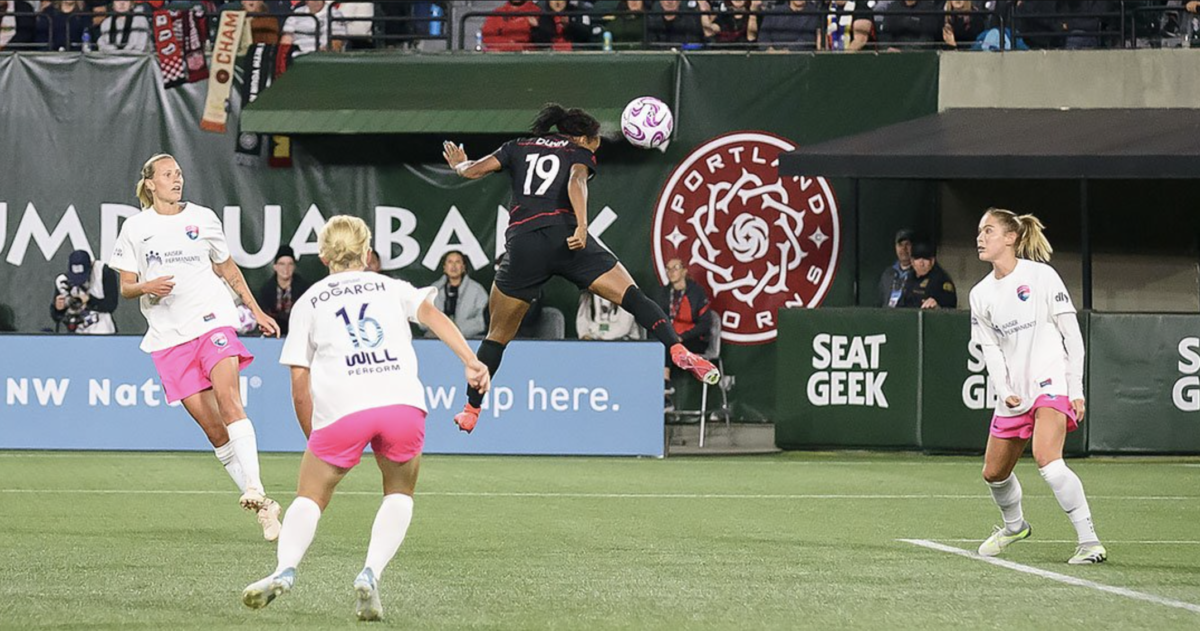
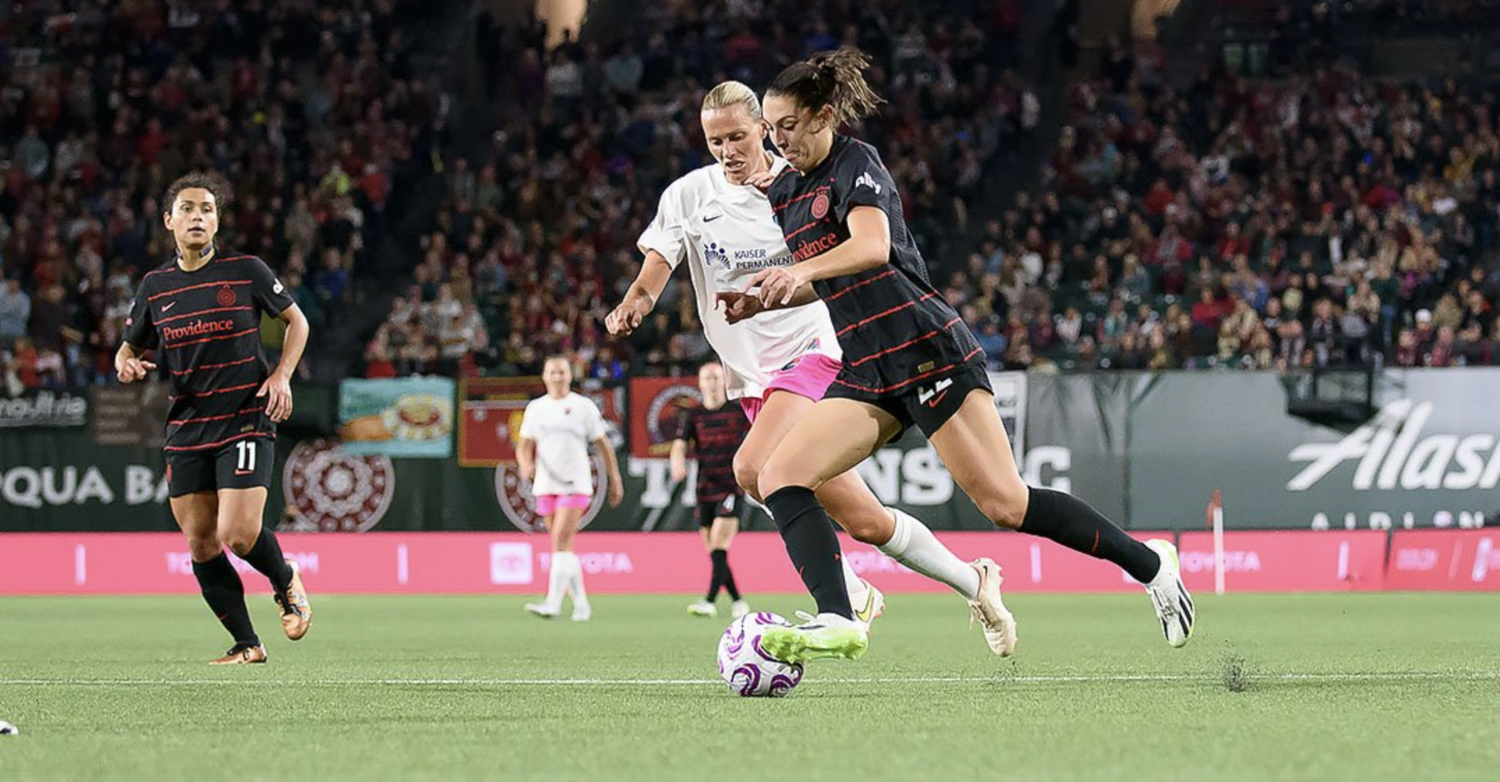
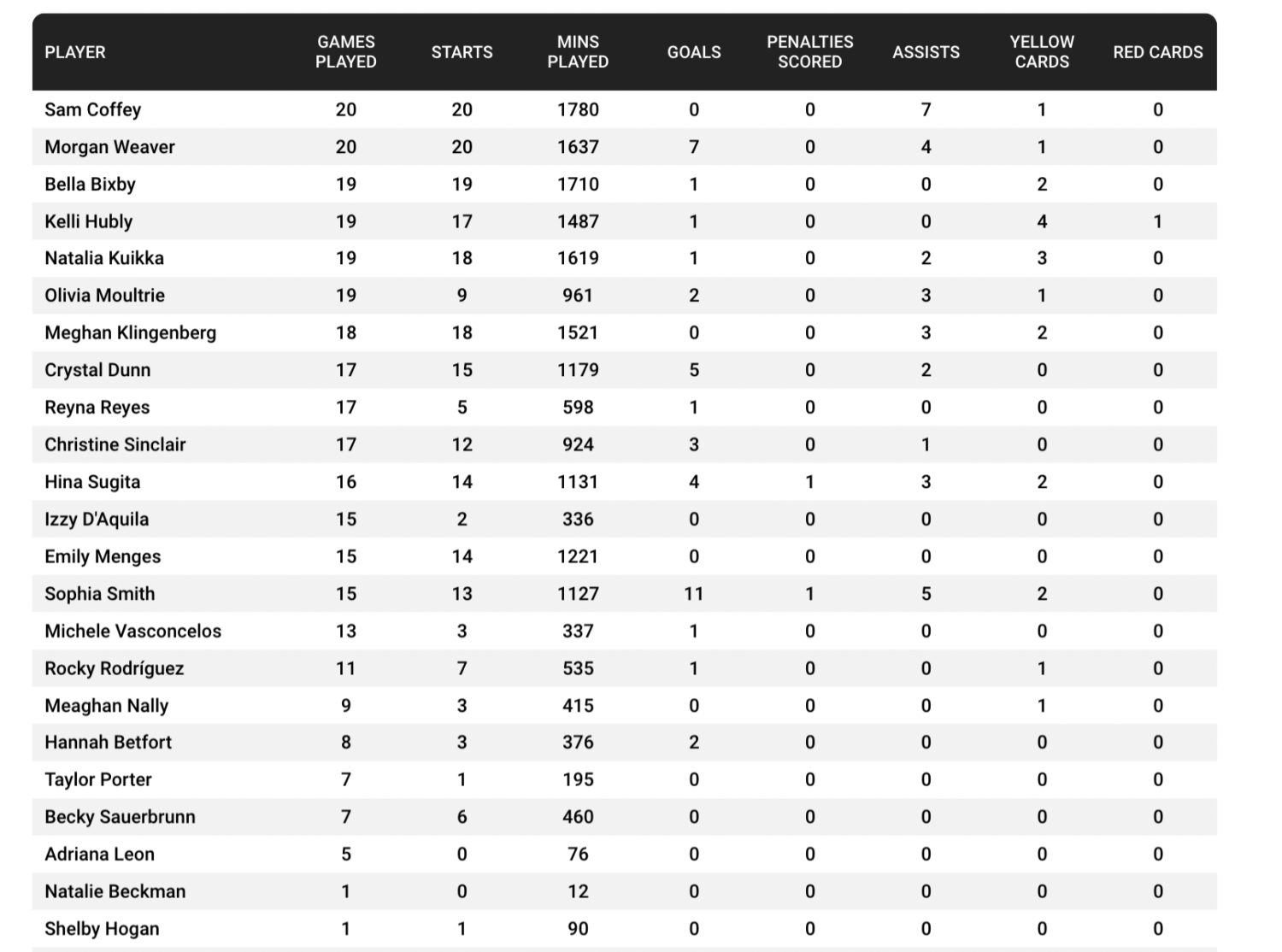
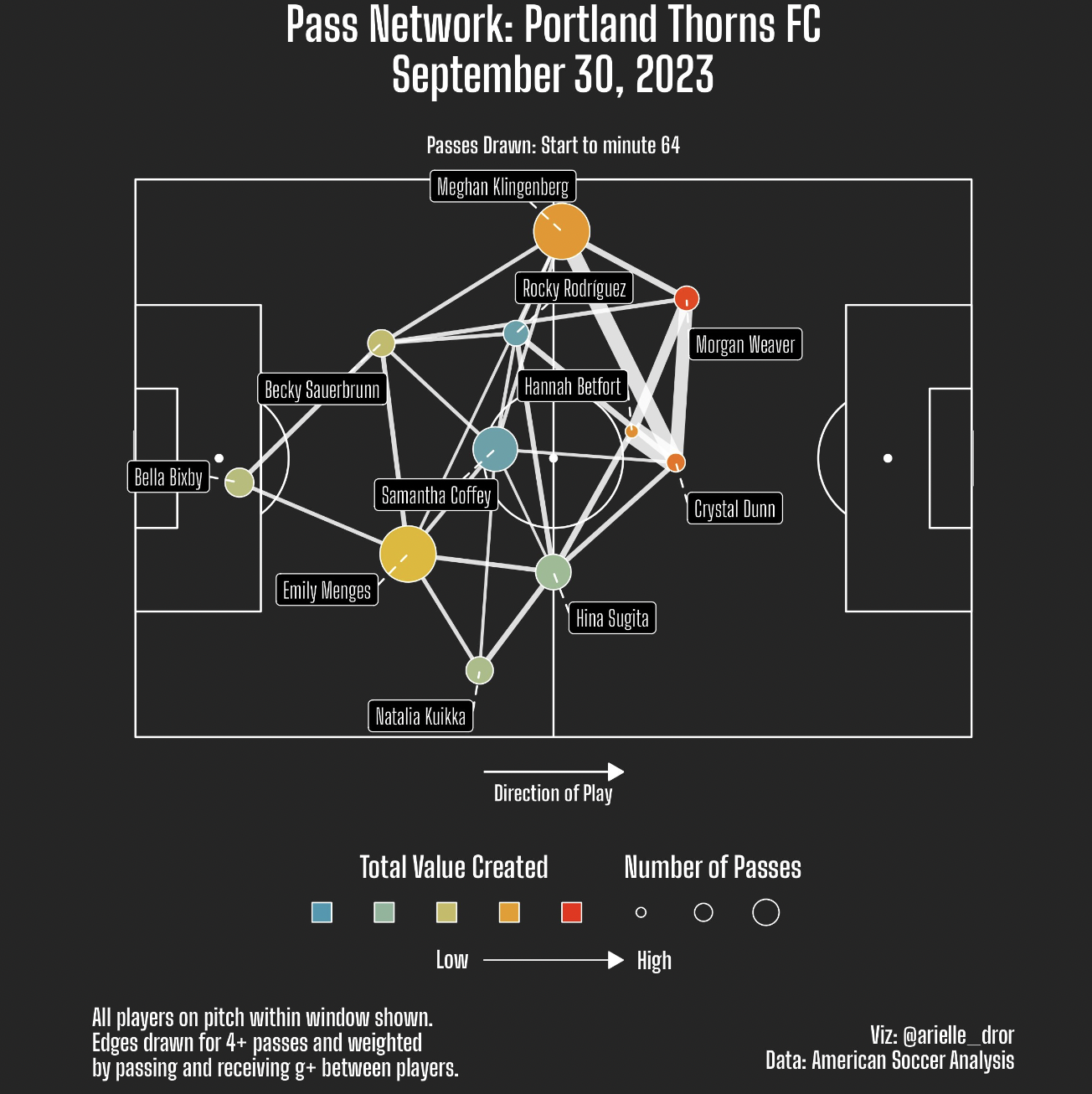
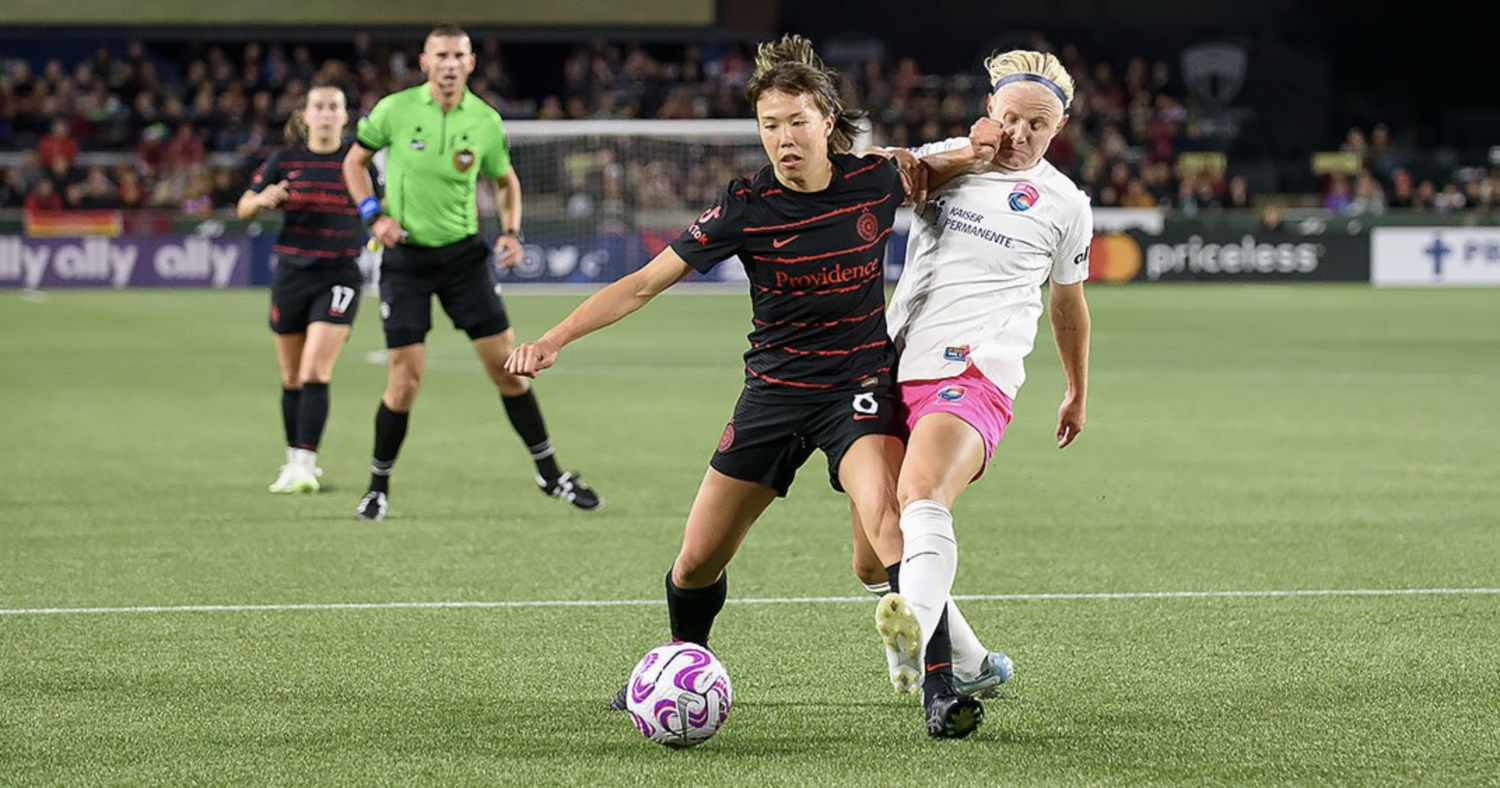
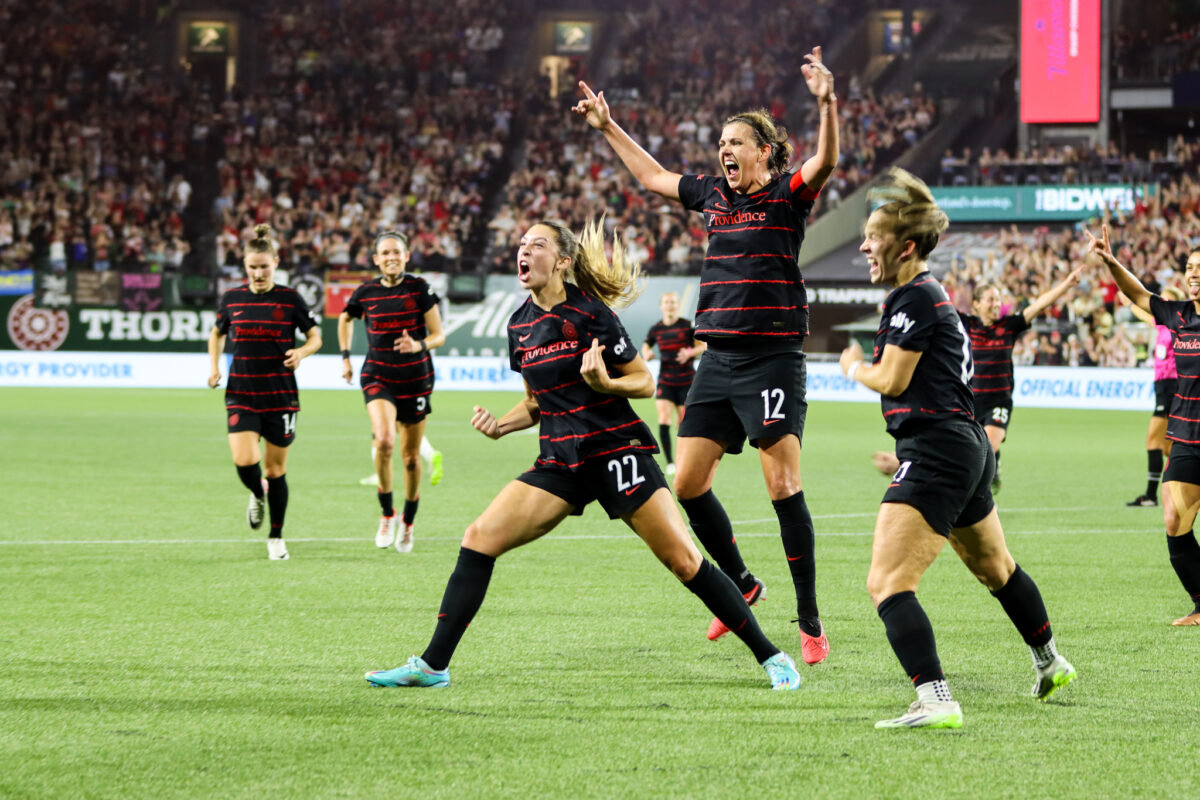
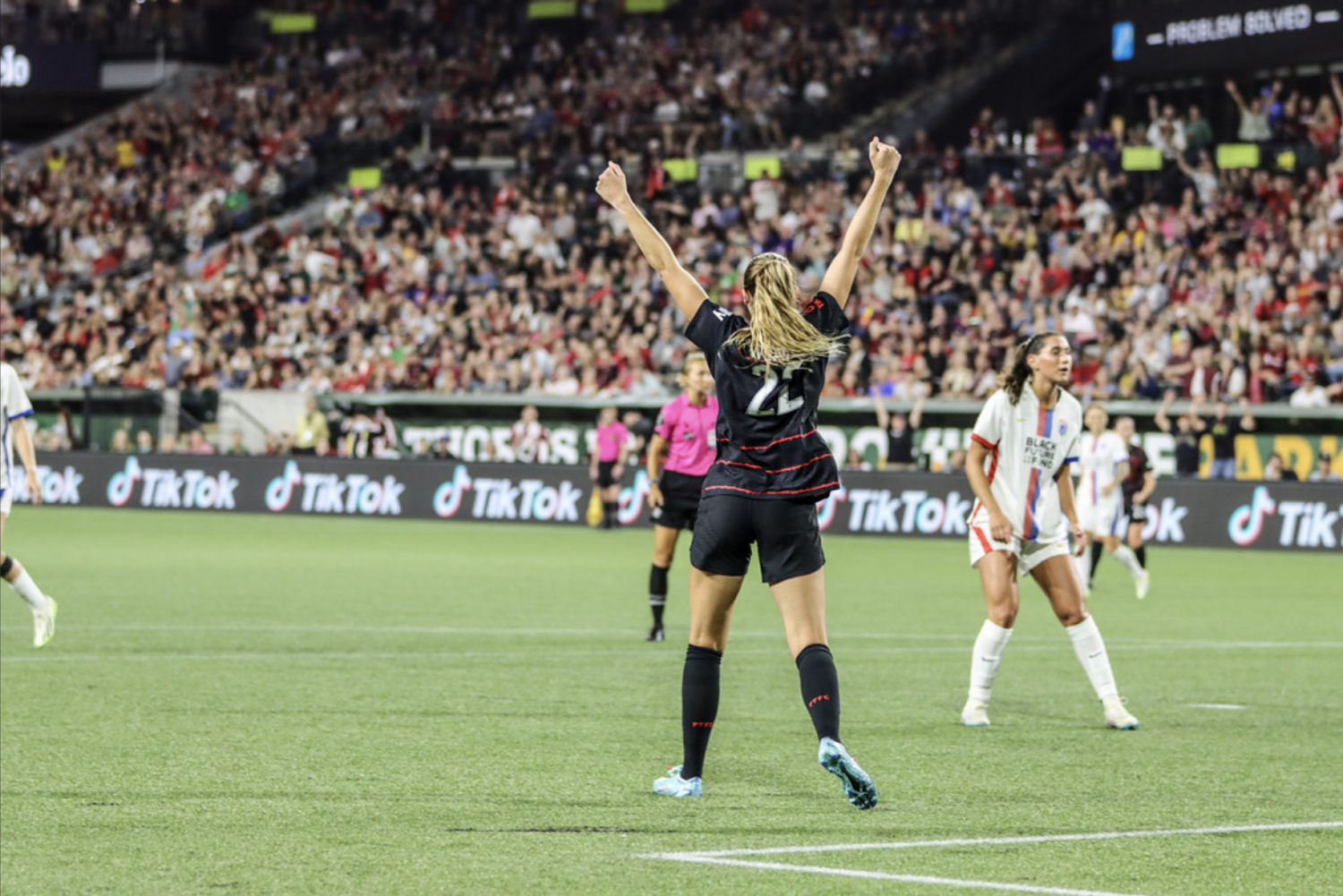
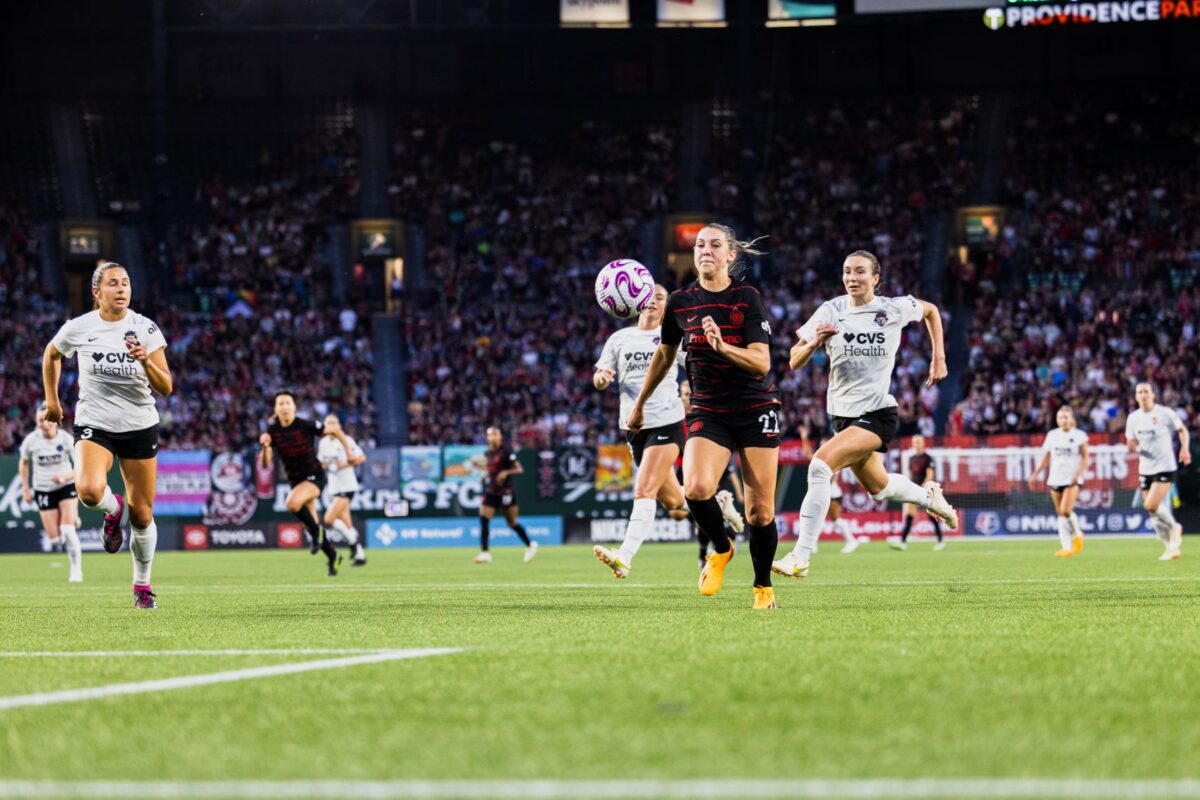
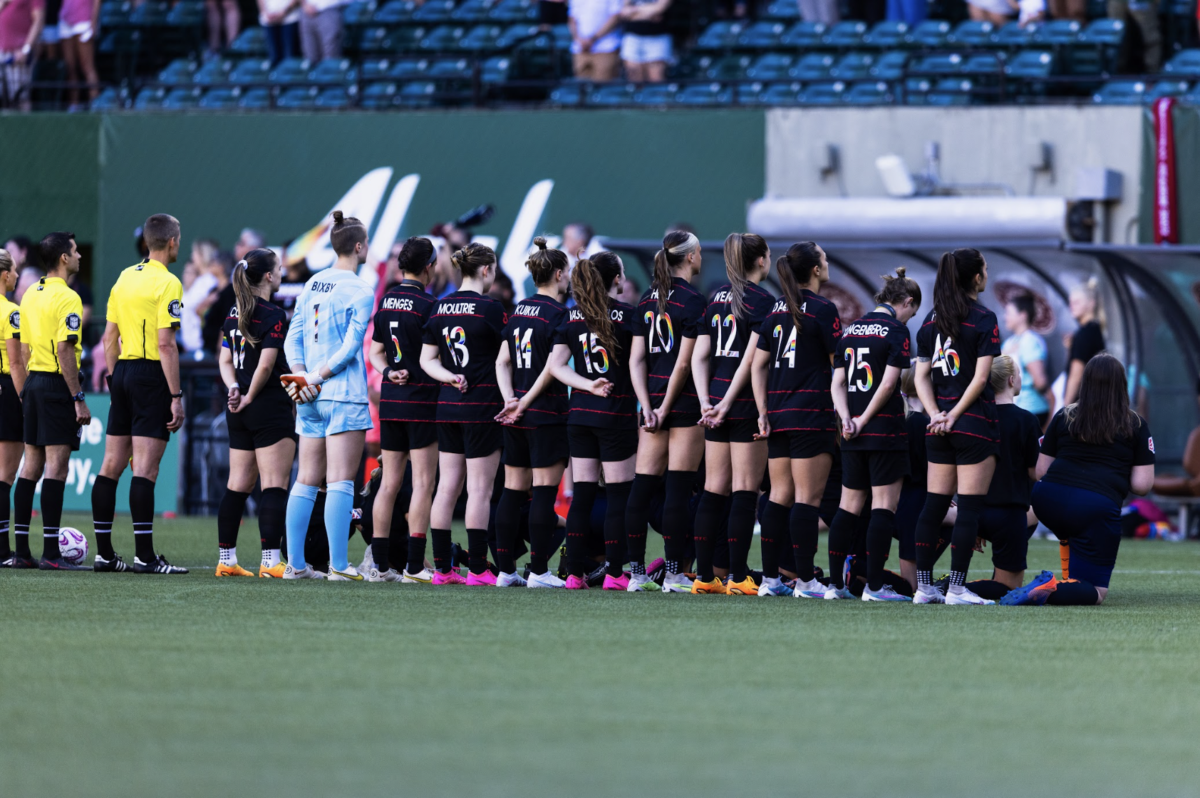
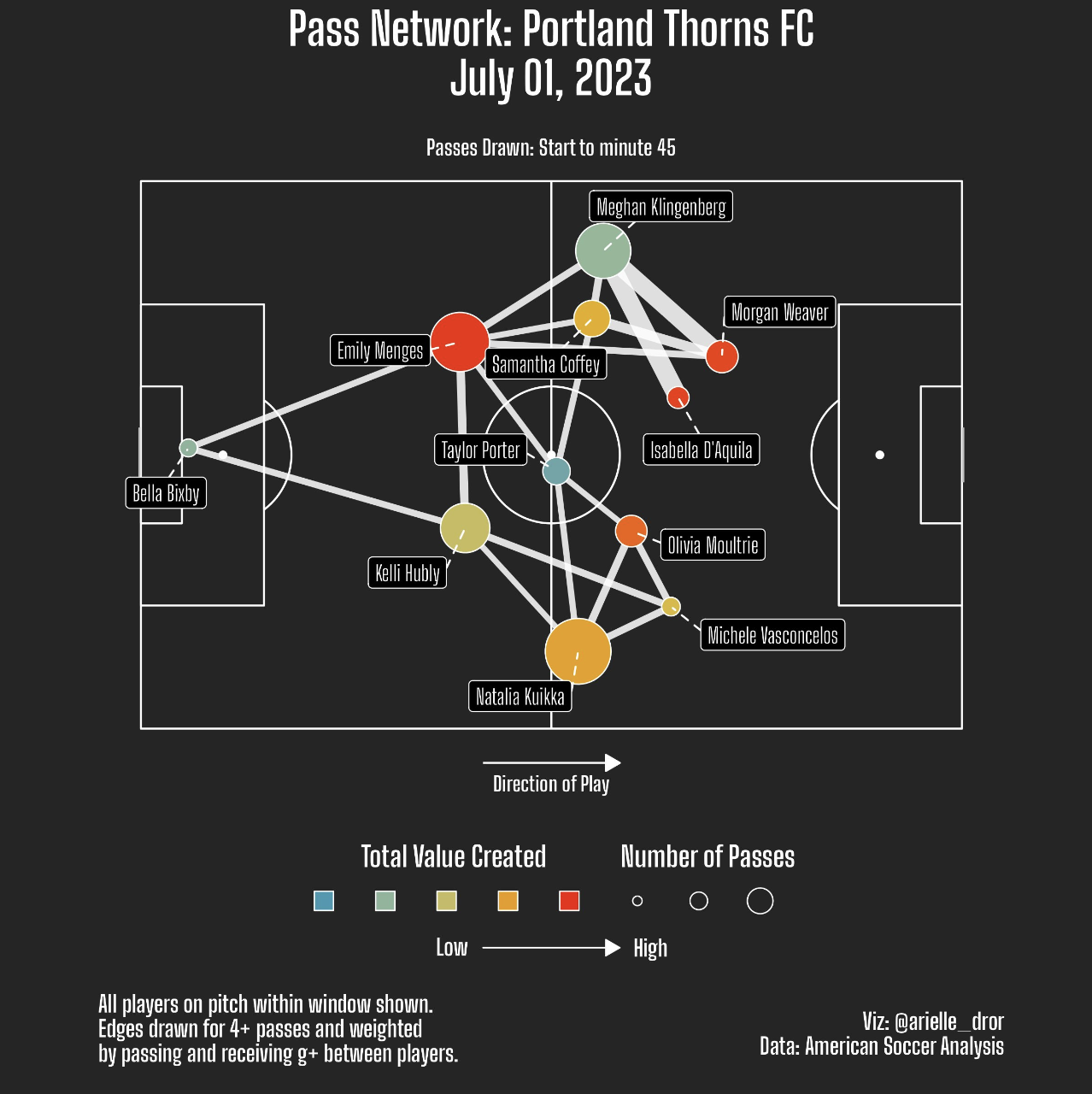
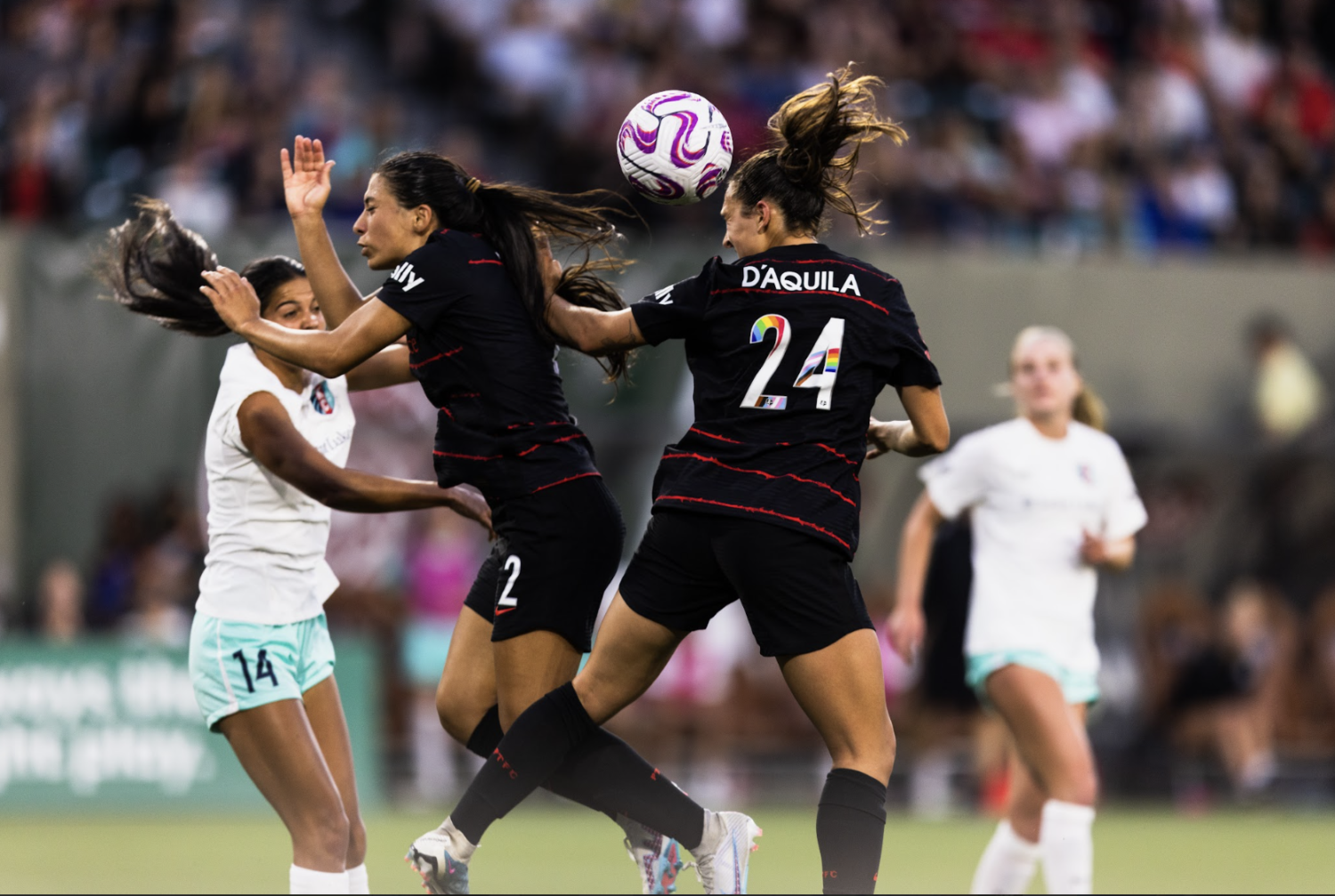
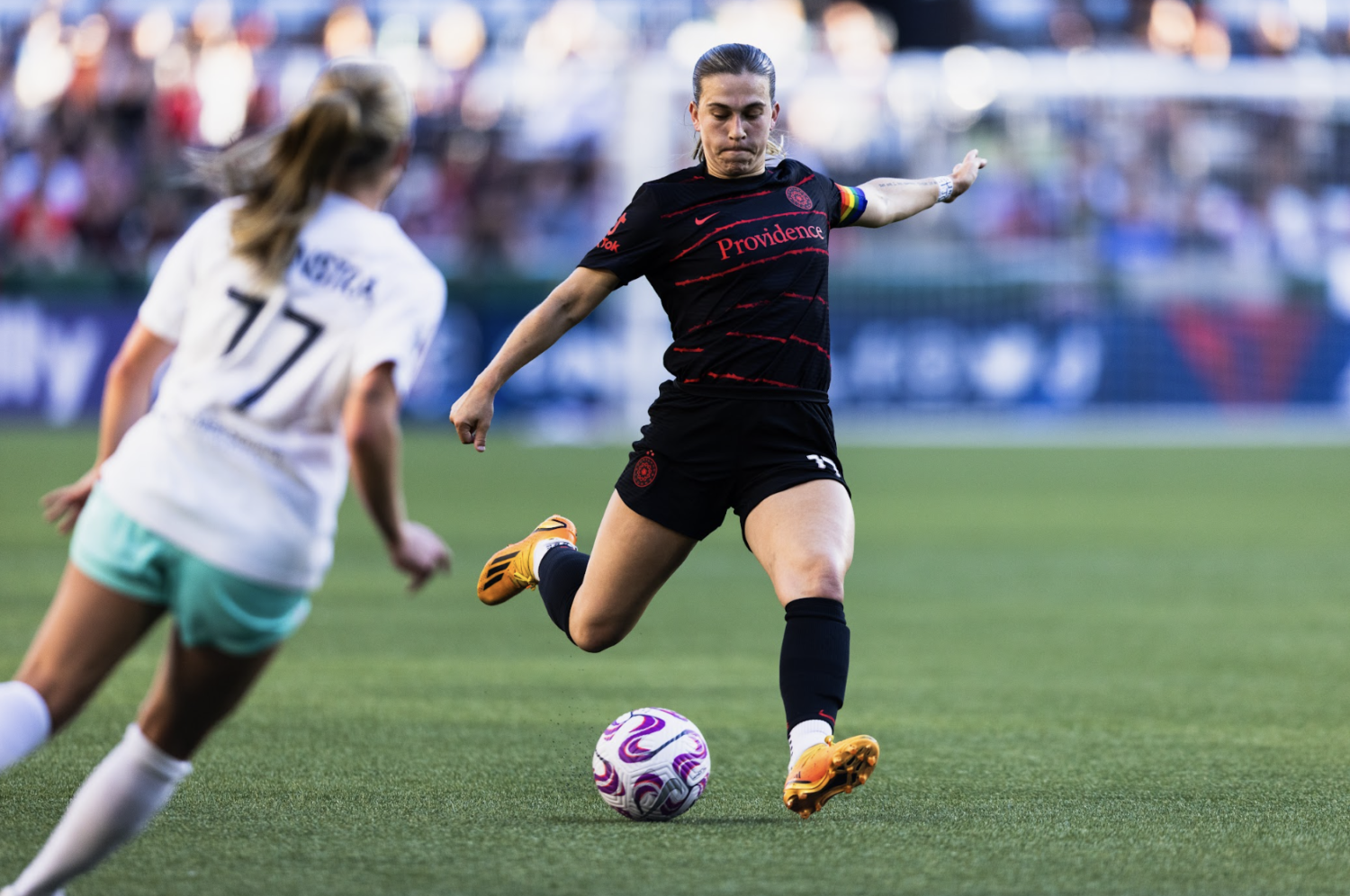
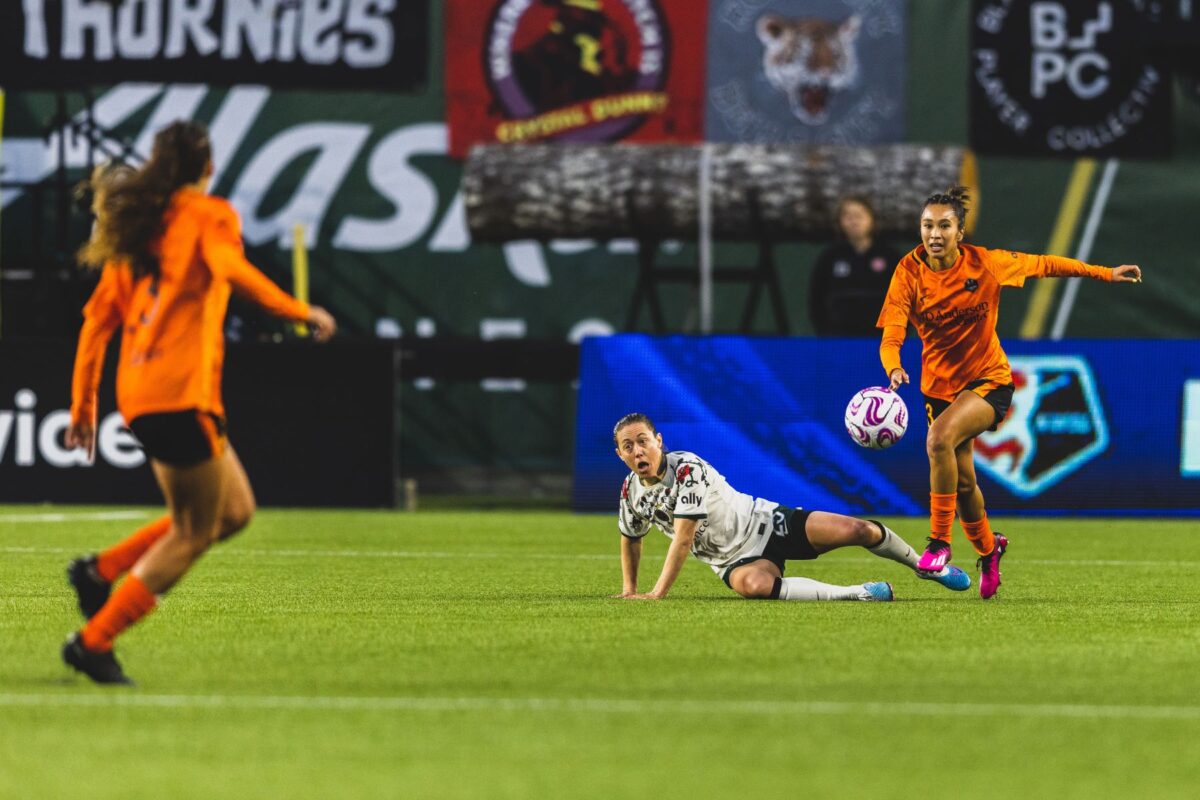
 Unlock with Patreon
Unlock with Patreon